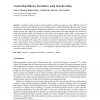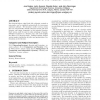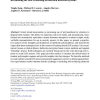832 search results - page 93 / 167 » Effect of Malicious Synchronization |
VIROLOGY
2008
13 years 10 months ago
2008
A malware mutation engine is able to transform a malicious program to create a different version of the program. Such mutation engines are used at distribution sites or in self-pro...
SAC
2008
ACM
13 years 9 months ago
2008
ACM
How humans behave when faced with a disaster, natural or man-made, can be exploited automatically by news-aware malicious software. We introduce weather worms, worms that can auto...
CORR
2010
Springer
13 years 8 months ago
2010
Springer
Singular Value Decomposition (and Principal Component Analysis) is one of the most widely used techniques for dimensionality reduction: successful and efficiently computable, it ...
ML
2010
ACM
13 years 8 months ago
2010
ACM
Current trends demonstrate an increasing use of polymorphism by attackers to disguise their exploits. The ability for malicious code to be easily, and automatically, transformed in...
TDSC
2010
13 years 8 months ago
2010
—This paper presents the first hierarchical Byzantine fault-tolerant replication architecture suitable to systems that span multiple wide area sites. The architecture confines ...



